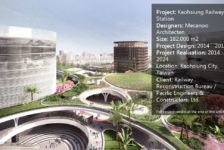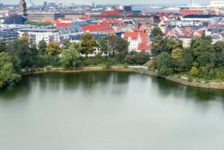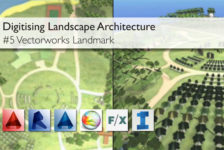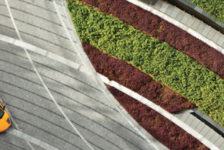Netherlands Army Museum and Netherlands Air Force Museum Landscape Design, by H+N+S Landscape Architects in the Former Airbase Soesterberg, the Netherlands. War is a painful, devastating, and dynamic situation. Maintaining the memory of such events is hard, yet necessary in order to protect the next generations from repeating the mistakes of the past. This should be the purpose of a war museum nowadays. The landscape design for the Netherlands Army Museum and the Netherlands Air Force Museum sheds a new light on the concept of memory and provides a new perception regarding our notions of war, history, and the armed forces.

Inspection by a senior military of the monument in its new context of the new memorial garden. Photo courtesy of H+N+S Landscape Architects
Netherlands Army Museum and Netherlands Air Force Museum
The complex that houses both museums is located in the facilities of a former military airbase called Soesterberg. The location bears traces of World War II history and NATO use, and also maintains important natural qualities. What is truly fascinating about this project is that what once used to be part of the military facilities has been restored into a natural reservoir. It appears as if nature has taken its toll over human action. The museum complex seen from above seems to have been invaded by the adjacent forest and heath. This coexistence forms a dynamic relationship between the building and its surroundings, which gives more emphasis to the museums’ character.
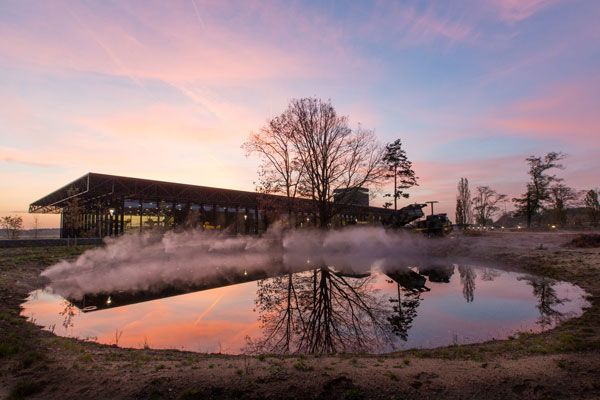
The fog fen in front of the National Military Museum in Soesterberg, The Netherlands, that opened its doors on December 11. The museum park of 45 hectare is designed by Dutch firm H+N+S Landscape Architects. It surrounds the museum with nature and air force heritage and is visible in each direction as a backdrop to the museum collection.
- Forming the museums’ surroundings as well as interesting vistas toward the landscape from the building’s interior, also serving to complement the museums’ exhibitions.
- Creating access to the museum complex.
- Preserving and restoring the important traces of the military base.
- Allocating a monument, a memorial garden, and a 3,000-person arena.
- Restoring the 45-hectare area and creating a sustainable sylvan ecosystem.
The museum complex is divided into three terraces. Each terrace has a special function. The top of the hill is a natural landmark surrounded by a heath valley. On the middle terrace — where the visitor arrives — the history of the area is displayed. The museum complex itself has been situated near the runways. The arena is on the lowest level, and there is a memorial area with garden and plaza on the east side.

A Section of the museum entry, with the entry bridge above the fern garden, connecting the museum to the gabion wall that marks the mid-level terrace with several hidden bunkers. Image courtesy of H+N+S Landscape Architects
- Beautiful Plaza Celebrates Canadian Landscape
- Perez Art Museum Embraces the Landscape Inside and Out
- Ceramic Museum and Mosaic Garden
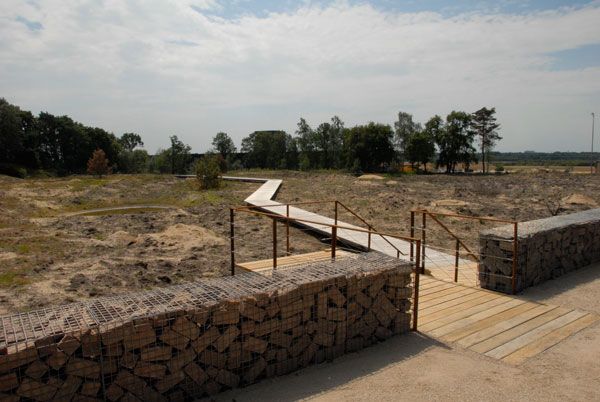
View from the Belvedere over the heath valley, with raised path along fens, towards the museum. Photo courtesy of H+N+S Landscape Architects
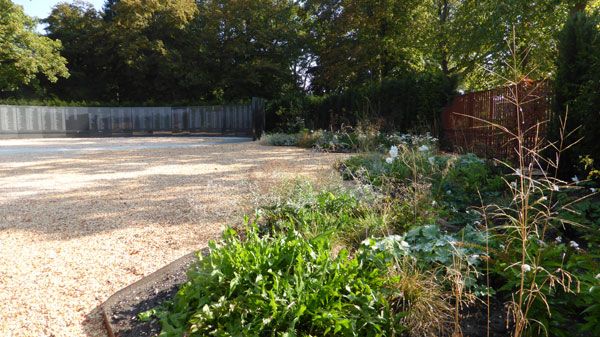
Memorial garden in its first season. The monument is surrounded by a large round taxus hedge, embracing a space with borders in color palettes. They tell a story that leads from war –red-, via emotions –purple-, reflection –blue-, towards peace –white-. Photo courtesy of H+N+S Landscape Architects
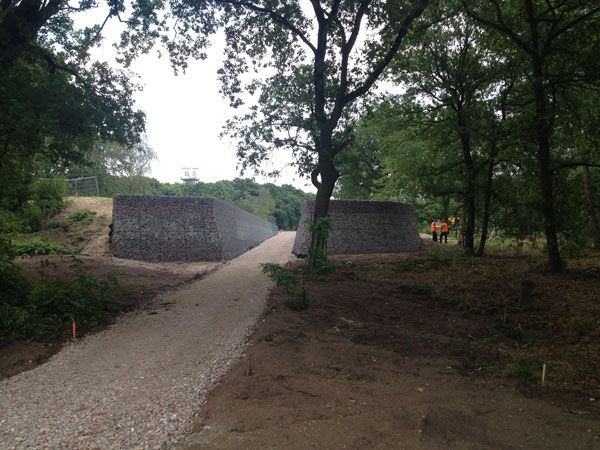
Construction of gabion stronghold, creating the entry path towards the arena.Photo courtesy of H+N+S Landscape Architects
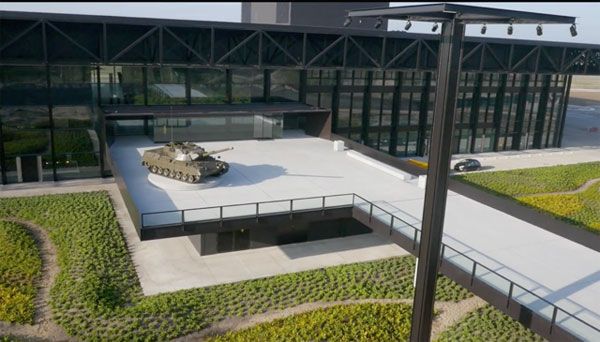
View towards the entry bridge, leading over the fern garden. Photo courtesy of H+N+S Landscape Architects
Netherlands Army Museum and Netherlands Air Force Museum
This project has managed to reveal beauty where beauty was hard to find. It has not evaded the context and the history of the place, nor did it turn away from the negative tension that the memory of war bears. The Netherlands Army Museum and the Netherlands Air Force Museum Landscape Design has taken context, history, nature, and landscape narrative a step further. Recommended Reading:
- 100 Landmarks of the World: A Journey to the Most Fascinating Landmarks Around the Globe by Parragon Books
- Public Art: Theory, Practice and Populism by Cher Krause Knight
Article by Eleni Tsirintani Return to Homepage
Published in Blog



